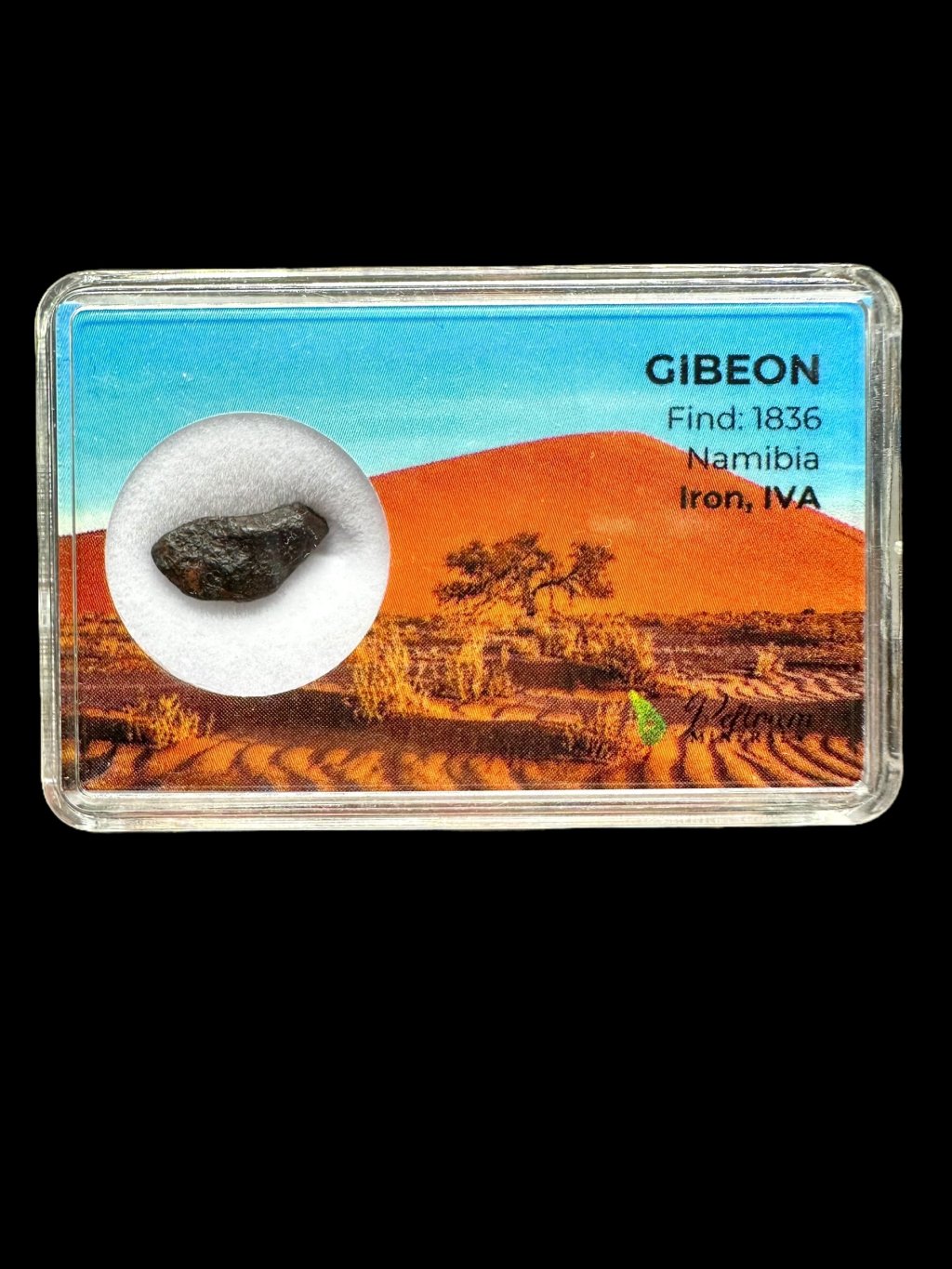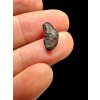Meteorite Gibeon 1,01g – Namibia
Type: Iron meteorite, octaedrite class IVA
Locality: Namibia
Weight: 1,01g
Dimensions: 12 x 5 x 5 mm
Year found: 1836
Total known weight: 26 tonnes
Surface treatment: none – raw
Packaging: transparent plastic box (5,8 x 3,8 x 1,6 cm)
| Category: | Gibeon |
|---|---|
| By name: | Gibeon |
| ? Type: | Iron |
| ? Surface treatment: | Natural (raw) |
| Packaging: | In box |
Gibeon Meteorite – famous iron meteorite from Namibia
The Gibeon meteorite is a remarkable iron meteorite that fell in prehistoric times, with fragments scattered over an area of approximately 275 × 100 kilometers in Namibia. Named after the nearby town of Gibeon, it belongs to the chemical group IVA and is classified as a fine octahedrite due to its distinct crystal structure known as Widmanstätten patterns, highly valued by collectors and jewelry designers.
Discovery history and composition
The Gibeon meteorite was first documented by Europeans in 1836 when James Alexander sent samples to London, where their meteoritic origin was confirmed. The fragments consist of an iron-nickel alloy with traces of cobalt, phosphorus, carbon, sulfur, chromium, copper, and zinc.
Extent and protection
Approximately 26 tonnes of fragments have been recovered, with some weighing several tonnes. A significant collection effort took place between 1911 and 1913, led by Dr. Paul Range, who distributed the pieces to museums worldwide. The largest collection of Gibeon meteorites can be seen in central Windhoek, the capital of Namibia.
The Gibeon meteorite shower is considered one of the largest on Earth. Although new fragments are still being discovered, their collection or damage is illegal as they are protected as national heritage of Namibia.







